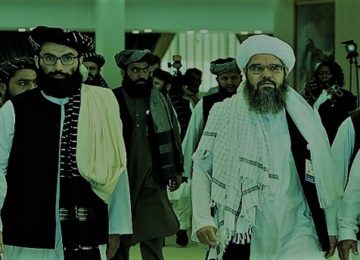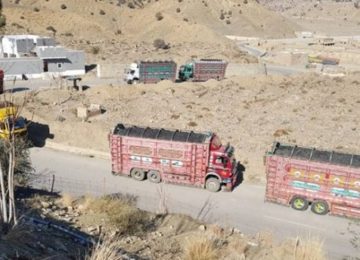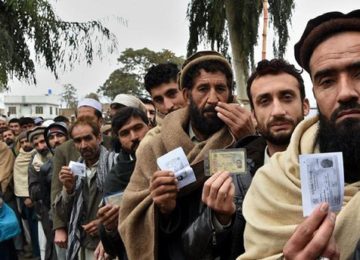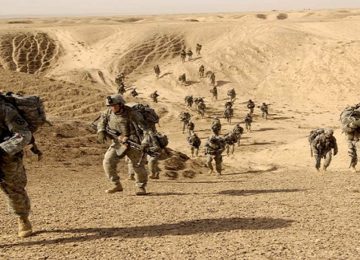July 19, 2019
Two years ago, the makeshift houses on the hilltops around Kabul’s west side started to burst with pastel colours.
It was part of an ongoing effort by the Kabul municipality to beautify the capital, Kabul.
Residents on the Joy-e Shir hillside, where most of the houses are informal residences, are offered a choice between shades of red, orange, blue, yellow and white.
Habib Rahman, a 30-year-old bricklayer who has spent his entire life on the hillside, says he is happy about the initiative.
“Well, it’s one good thing,” he told Al Jazeera.
As politicians and business leaders from some of the world’s leading cities meet these days in Medellin, Colombia, at the World Cities Summit to discuss urban challenges and share best practices, in Kabul, security and environmental concerns are prompting residents and experts to demand better urban strategies and living conditions.
Water every other day
In an August 2014 press briefing, Ashraf Ghani, the current president of Afghanistan, said at least 75 percent of Afghans were living in informal housing due to decades of war, which led to mass displacement and disrupted efforts to properly plan and develop the country’s urban centres.
Ghani, who was the presidential candidate at the time, said he was committed to “make all informal housing formal because once you have property rights you relate to police and courts”.
But with tens of thousands of informal settlements across the country, backlogs in the court systems and corruption challenges, five years later, Ghani still has a long way to go before being able to reach that goal.
Residents in Joy-e Shir say they appreciated the aesthetic value of the repainting initiative, but they add that this needs to be followed by other efforts to relieve them of the difficulties of living in an unplanned settlement.
With no paved roads leading to the houses higher up on the hill, locals say they have to travel up to two hours up and down the hillside to be able to access to medical care, schools and other basic necessities.
Though there are wells and taps along the hillside, water is scarce.
“We only get water every other day,” Rahman says.
According to the Asia Foundation’s 2018 survey of the Afghan People, 55.4 percent of residents in the province of Kabul said their access to clean drinking water was worsening. A further 47.1 percent of respondents said that lack of access to utilitiy services, including electricity and water, was a primary challenge.
Nadera, who rents a house for 2,000 Afghanis ($30) near the top of the hill, says the repainting project was a good start by the government, but did not go far enough.
After fighting in the Ghorband Valley in northern Parwan province, one of the country’s most dangerous area, 10 years ago, Nadera says her family had no choice but to find a home on the hill.
Her house was painted a bright blue a few days ago, but she says she wishes the Kabul municipality would build proper roads and walkways that would make the trek back to her home easier.
“I can barely walk up the hill alone, but with my son in my arms it’s even more difficult,” the 30-year-old to Al Jazeera.
People seek security
The experiences faced by Nadera and Rahman are not uncommon, nor are they relegated to just the impoverished living in far flung areas.
Even in more well-to-do parts of the city, people are confronted with many challenges, including a rising crime rate.
For seven years, Hamid Mohammadi has worked at the AIB Building – a 10-floor high-rise that is home to 90 families living in residential apartments, two bank branches and several dozen small business in the capital’s commercial centre, Shahr-e Naw.
He says the biggest issue facing Kabul residents today is security, including street crime and attacks claimed by the Taliban and Islamic State or Iraq and the Levant (ISIL or ISIS) fighters that have been increasingly striking targets in the country’s major cities over the past few years.
“More than beauty, people are looking for a place that’s secure,” Mohammadi says, pointing to new high-end buildings where rent can cost more than $1,000 a month.
“What’s the point of living in a fancy new building when you can be robbed just by walking a few metres from the building?”
Air pollution
As the decades of conflict around the world has led more people to seek refuge and opportunity in Kabul, the city’s population has ballooned past the five million mark. This has also had an effect on air quality and pollution rates in the Afghan capital due to the growing number of vehicles using often poor-quality fuel; more people burning refuse; and a rise in the usage of coal stoves to keep warm in the harsh winter weather.
In 2016, the World Health Organization estimated that the deaths of more than 17,000 people in Afghanistan were linked to air pollution.
Schah Zaman Maiwandi, director general of the National Environmental Protection Agency (NEPA), says Afghanistan – and in particular its urban centres – is facing a number of environmental challenges, including air pollution, clean-water access and waste management.
But he acknowledges that reducing and controlling air pollution is by far the most difficult.
“There are so many different sources of air pollution and because it’s in the air, it’s an issue that cuts across all sectors of society.”
Maiwandi says NEPA has developed a special five-year environmental plan for Kabul. This includes dealing with city traffic and transport management, reducing the usage of coal and enhancing public awareness about how one’s daily activities can effect the environment.
Kabul residents say there has also been an increase in greenery and trees around the city in recent years, but that without a sense of security, they cannot enjoy the scenery.
“Yes, the streets are more organised and there are more trees, but believe me, people are afraid to step outside,” Mohammadi says.
Bringing something new
In recent years, the city has also seen a flourishing business for more high-end restaurants and cafes aimed at more well-to-do families and youth.
In 2016, Ahmad Farid Amiri, a graduate of the American University of Afghanistan, opened the Slice Bakery and Cafe in central Kabul which quickly became a gathering point for young Afghans.
For years, the capital was home to a number of high-price restaurants located behind blast walls or protected by armed guards that catered mostly to foreigners. But the success of establishments such as Slice led to a growing number of restaurants – there are now three other cafes located in the direct vicinity of Slice – that served the Afghan people directly.
However, Amiri says even though his establishment is part of a trend that has helped change Kabul’s dining scene, government support remains limited.
“We employ at least 70 people; we buy Afghan water and sodas; the ingredients for our pastries come from the local markets; but we still don’t get any kind of tax benefit or encouragement from the government,” Amiri says.
Then there is the issue of basic services and utilities needed to run such a business. Amiri says during the winter months, electricity shortages mean he has to spend at least 6,000 Afghanis ($74) a day on fuel for a 22-kilovolt generator.
When there is electricity, the high cost of commercial power 12.5 Afghanis (16 cents) per kilowatt means that on average, Amiri has to pay a 200,000 Afghani ($2,400) power bill every two months.
“These costs and limitations force us to get creative, but if we had support from the city it would lead others to start similar businesses,” Amiri says.
Still, he is happy that he and his staff are able to bring something new to Kabul, while helping to reinvigorate the economy.
“There wasn’t a proper place for me and my friends to go, so I created it.”
Source: ALJAZEERA
Disclaimer: Views expressed on this blog are not necessarily endorsed or supported by the Afghan Studies Center and Center for Research and Security Studies, Islamabad.



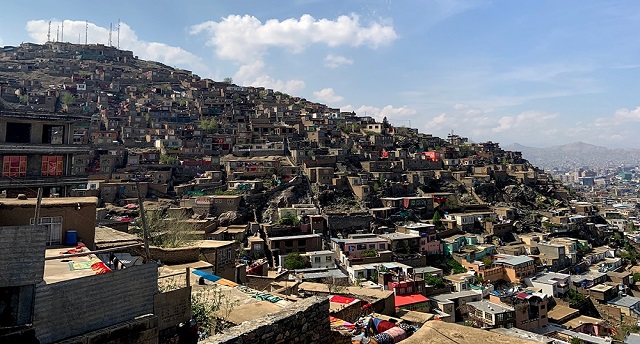
![Two years ago, the municipality began to paint the colours on the city's hillsides, but residents say they still lack basic roads and water access [Ali Latifi/Al Jazeera] Kabul](https://www.aljazeera.com/mritems/Images/2019/7/11/eb1caaa967d74ed2ad8aceec21171b94_18.jpg)
![Pollution and sanitation remain a major issue for the residents of Kabul, who say even the most iconic and historic sites are riddled with refuse [Ali Latifi/Al Jazeera] Kabul](https://www.aljazeera.com/mritems/Images/2019/7/11/656ec8bdabd64c58a6972a8ac1520307_18.jpg)
![Despite efforts to re-green the city, young people say the city of Kabul is still lacking in proper options for recreational activities and spaces [Ali Latifi/Al Jazeera] Kabul](https://www.aljazeera.com/mritems/Images/2019/7/11/f68b9c27620a4134a726bac4b2e2bc4d_18.jpg)
![Over the last few years, overcrowding in the city of Kabul has led to the development of new high-end high-rise buildings [Ali Latifi/Al Jazeera] Kabul](https://www.aljazeera.com/mritems/Images/2019/7/11/435e5a836dc04564b8a8993f3f297ac9_18.jpg)
